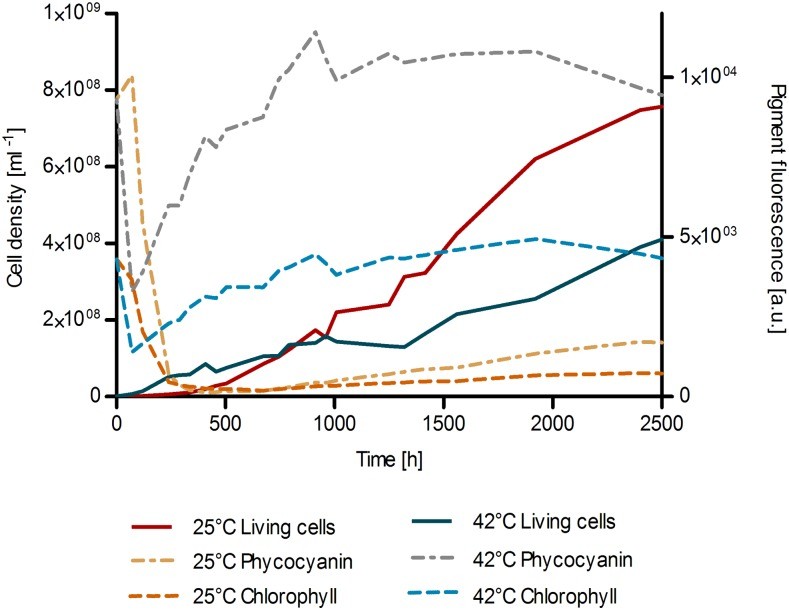Abstract
Thermophilic algae like C. merolae thrive in extreme environments. This article delves into how these organisms adapt to colder temperatures, focusing on the significant remodeling of their photosynthetic machinery, specifically phycobilisomes (PBS), and the associated Machinery Tunes required for survival. This adaptation involves adjusting protein folding, degradation, and homeostasis mechanisms, ultimately allowing the algae to thrive in a broader range of temperatures.
Introduction
C. merolae, a thermophilic red alga, typically thrives in hot, acidic environments. Its ability to survive temperature fluctuations necessitates intricate machinery tunes within its cellular processes. This article explores the adaptive mechanisms employed by C. merolae when exposed to lower temperatures, highlighting the critical role of photosynthetic machinery adjustments.
Photosynthetic Machinery Remodeling at Lower Temperatures
When subjected to a temperature decrease from 42°C to 25°C, C. merolae exhibits a dramatic reduction in phycobilisome (PBS) content. This initial response involves a significant down-regulation of both phycocyanin and allophycocyanin, the primary light-harvesting components of PBS. Concurrently, the associated linker proteins that stabilize the PBS structure also undergo down-regulation, signifying a comprehensive dismantling of the light-harvesting apparatus.
This dismantling process is further corroborated by quantitative proteomics analysis, which reveals a significant decrease in the abundance of proteins associated with PBS assembly and function. Interestingly, the PSI-specific antenna complex, responsible for transferring energy to photosystem I (PSI), demonstrates greater stability at lower temperatures compared to the PSII-associated PBS. This suggests a preferential retention of PSI functionality under temperature stress.
Machinery Tunes for Protein Homeostasis and Cellular Respiration
Beyond photosynthetic machinery adjustments, C. merolae also implements crucial machinery tunes in protein homeostasis mechanisms. The lower temperature induces up-regulation of chaperones, heat shock proteins, and proteins involved in protein degradation. These changes reflect the increased demand for protein folding and quality control under suboptimal temperature conditions.
Furthermore, the alga exhibits alterations in cellular respiration pathways. While the overall respiration rate remains relatively stable, specific enzymes involved in glycolysis and the Krebs cycle show differential regulation. This suggests a fine-tuning of metabolic processes to maintain cellular energy balance under temperature stress.
Photosynthetic Efficiency and Light Adaptation
Despite the reduction in light-harvesting antennae, the chlorophyll-to-photosystem ratio in 25°C acclimated cells remains comparable to that of 42°C cells. However, the 25°C cells require a higher light intensity to reach maximum photosynthetic efficiency, indicating a shift in light adaptation.
Conclusion
C. merolae‘s ability to thrive under temperature fluctuations underscores the remarkable plasticity of its cellular machinery. The orchestrated machinery tunes, encompassing photosynthetic machinery remodeling, protein homeostasis adjustments, and metabolic fine-tuning, enable this thermophilic alga to adapt and proliferate in a broader temperature range. This adaptability highlights the intricate interplay between various cellular processes in response to environmental challenges. Furthermore, the thermostability of the photosystems presents potential biotechnological applications, especially in the realm of heterologous protein expression. The loss of PBS at lower temperatures could facilitate the attachment of recombinant proteins to the thylakoid membranes, making C. merolae an intriguing model for future research.
